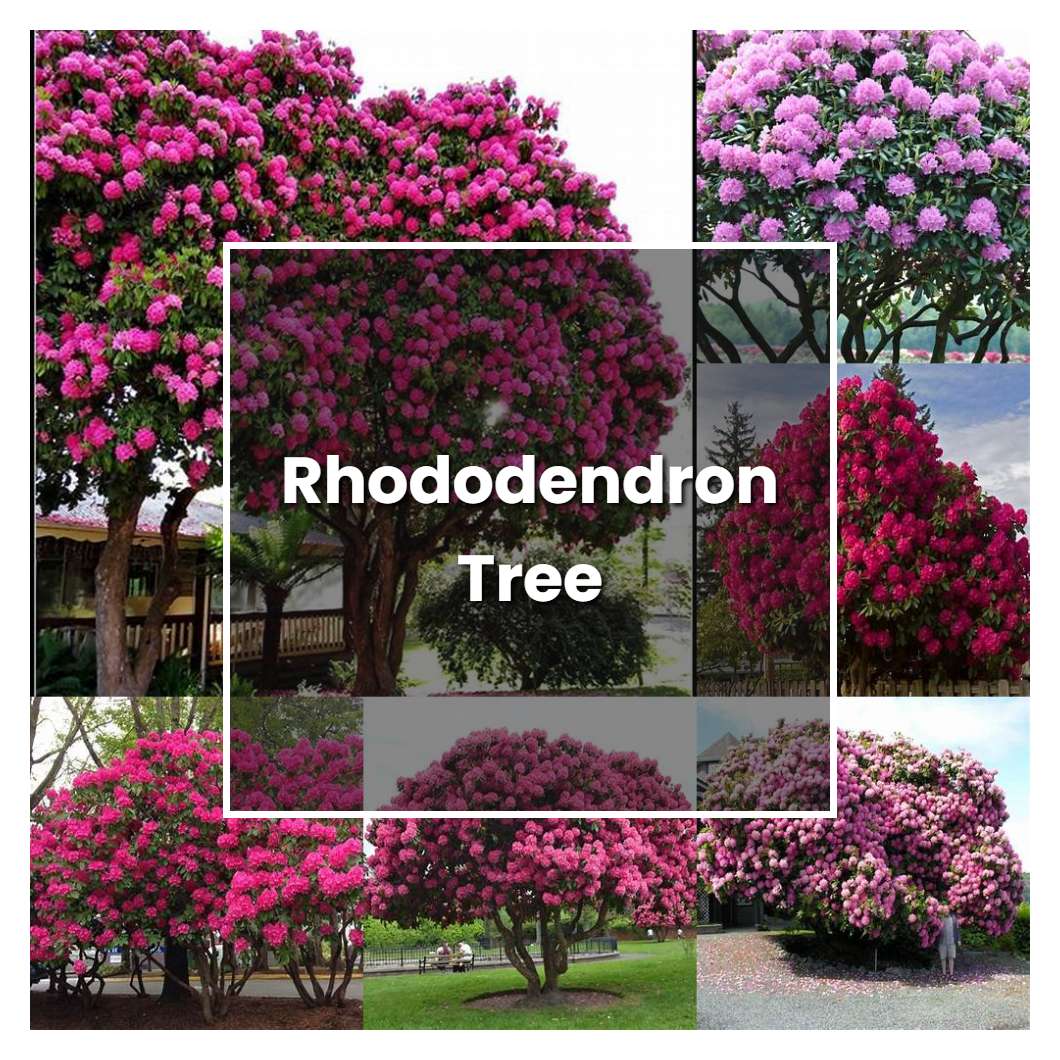Rhododendron tree is a beautiful and eye-catching plant that can add elegance and curb appeal to any home. This hardy tree is low-maintenance and can thrive in a variety of climates and soil conditions. Rhododendron tree is an excellent choice for those looking for an easy-care plant that will provide year-round interest.

Related plant:
Rhododendron Arboreum
Related plant:
Rhododendron Flower
About soil condition, rhododendron tree need a well-drained, acidic soil with a pH of 5.5 to 6.5. If your soil is too alkaline, you can mix in some sphagnum peat moss or ground pine bark to lower the pH. Rhododendrons also need soil that is high in organic matter.
So, like the other rhododendrons, the rhododendron tree requires at least 4 to 6 hours of sunlight each day to maintain its healthy growth. The tree's leaves will start to turn yellow and drop off if it does not receive enough sunlight. In order to ensure that your rhododendron tree gets the sunlight it needs, plant it in an area that receives full sun to partial sun.
The temperature condition is ideal for the growth of the rhododendron tree. The tree grows best in humid and cool climates and can tolerate temperatures as low as -15 degrees Celsius. In areas with warm summers, the tree should be planted in a shady location.
Ideal humidity condition for this plant is around 50%. If the humidity level is too low, the leaves will turn brown and drop off. If the humidity level is too high, the leaves will turn yellow and drop off.
About fertilizer, usually the plant does not need too much because the rhododendron tree already has a lot of organic matter around the roots. When you do fertilize, use a low-nitrogen fertilizer and apply it in the spring. Be careful not to over-fertilize, which can lead to leafburn.
Pruning is an important part of keeping a rhododendron tree healthy and beautiful. Rhododendrons are typically pruned in late winter or early spring, before new growth begins. The best time to prune rhododendrons is when the plant is dormant. This allows the plant to heal quickly and keep its shape.
Propagation is done by rooting stem cuttings taken from the plant. The cuttings should be taken from new growth and should be about 6 inches long. Cut the bottom inch of the cutting at a 45 degree angle and remove the leaves from the bottom half of the cutting. Dip the bottom of the cutting in rooting hormone and plant in a pot filled with moistened potting soil. Place the pot in a bright location but out of direct sunlight. Water the cutting when the soil begins to dry out. The cutting should root within 4 to 6 weeks.
Usually, the plant growth rate is slow to moderate. Depending on the species, rhododendrons can range anywhere from 6 to 24 inches per year. The roots of rhododendrons are wide-spreading, so it is important to give them plenty of room to grow. They prefer moist, well-drained soil that is high in organic matter.
Common problems for this kind of plant are caterpillars, aphids, scale, and root rot. The caterpillars are the most serious problem since they can eat entire leaves in a very short time. Aphids are also a problem since they can suck all the sap out of the leaves, causing them to turn yellow and eventually die. Scale can also cause problems since they can attach themselves to the leaves and branches, causing the plant to become stressed. Root rot is also a problem since it can cause the plant to become unstable and eventually topple over.
Source:
Rhododendrons: Spring color in shady areas - University of Missouri
Rhododendron - Ohio State University
Rhododendron - NC State University
